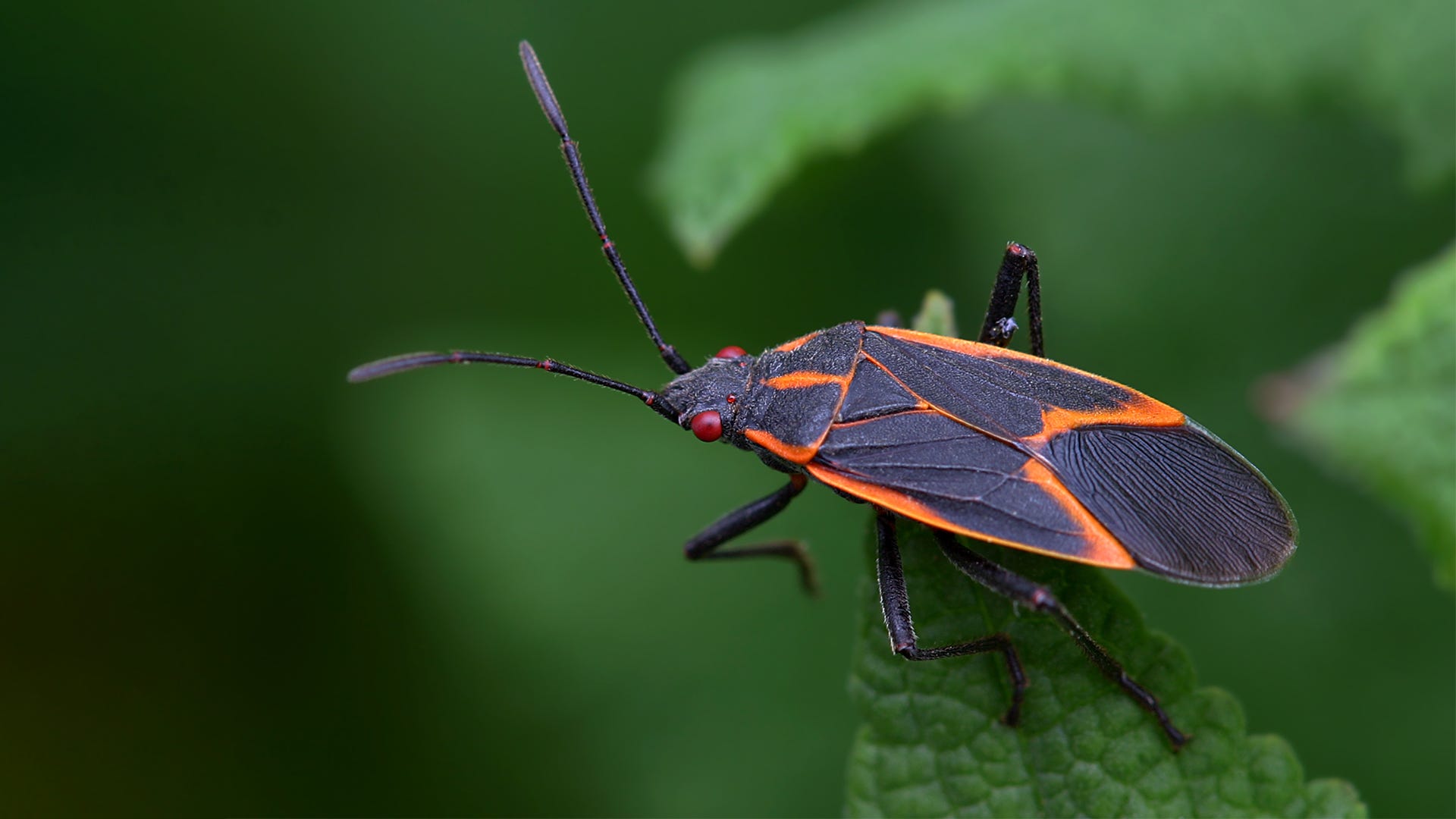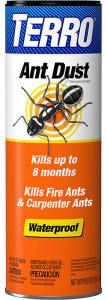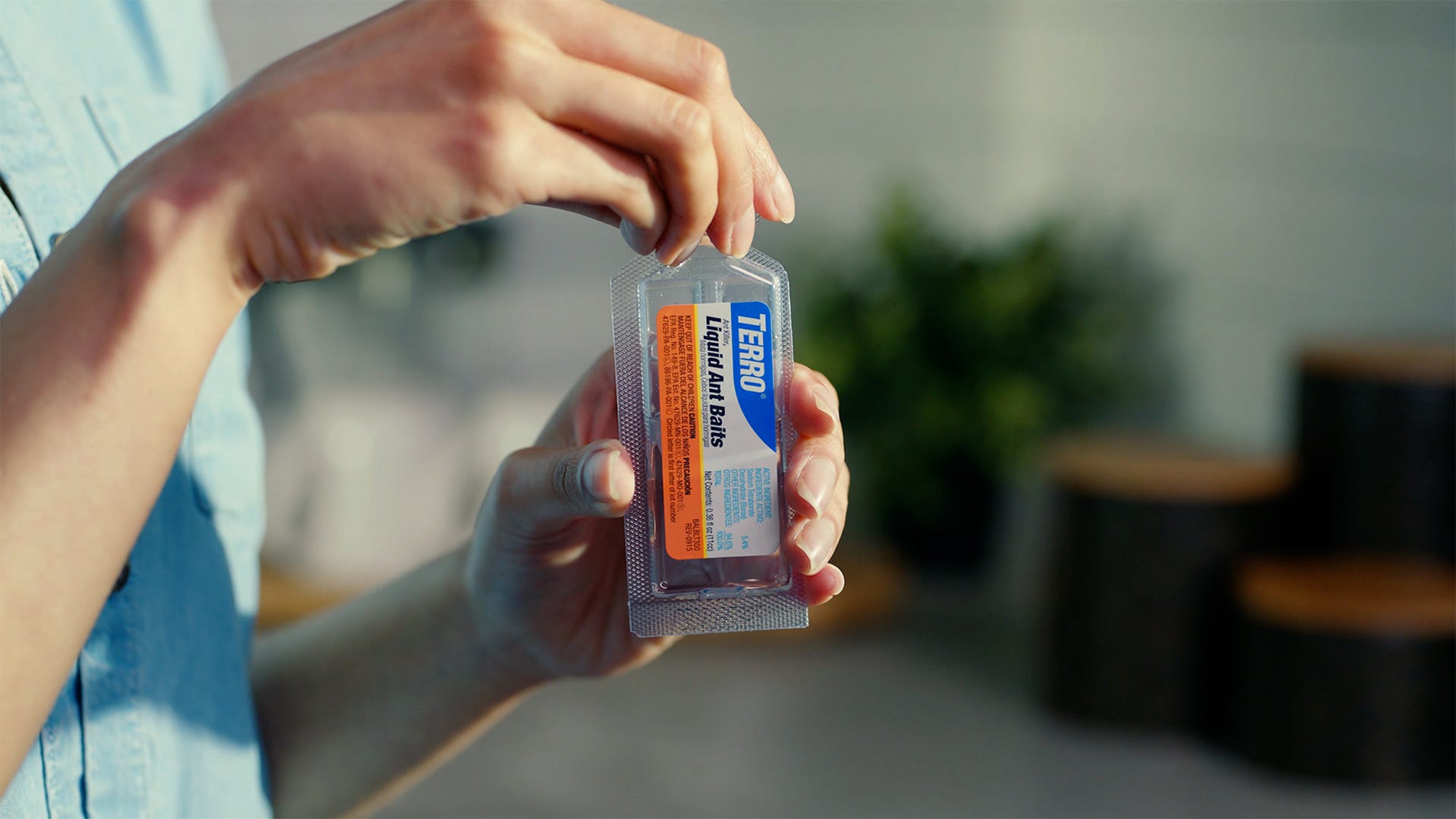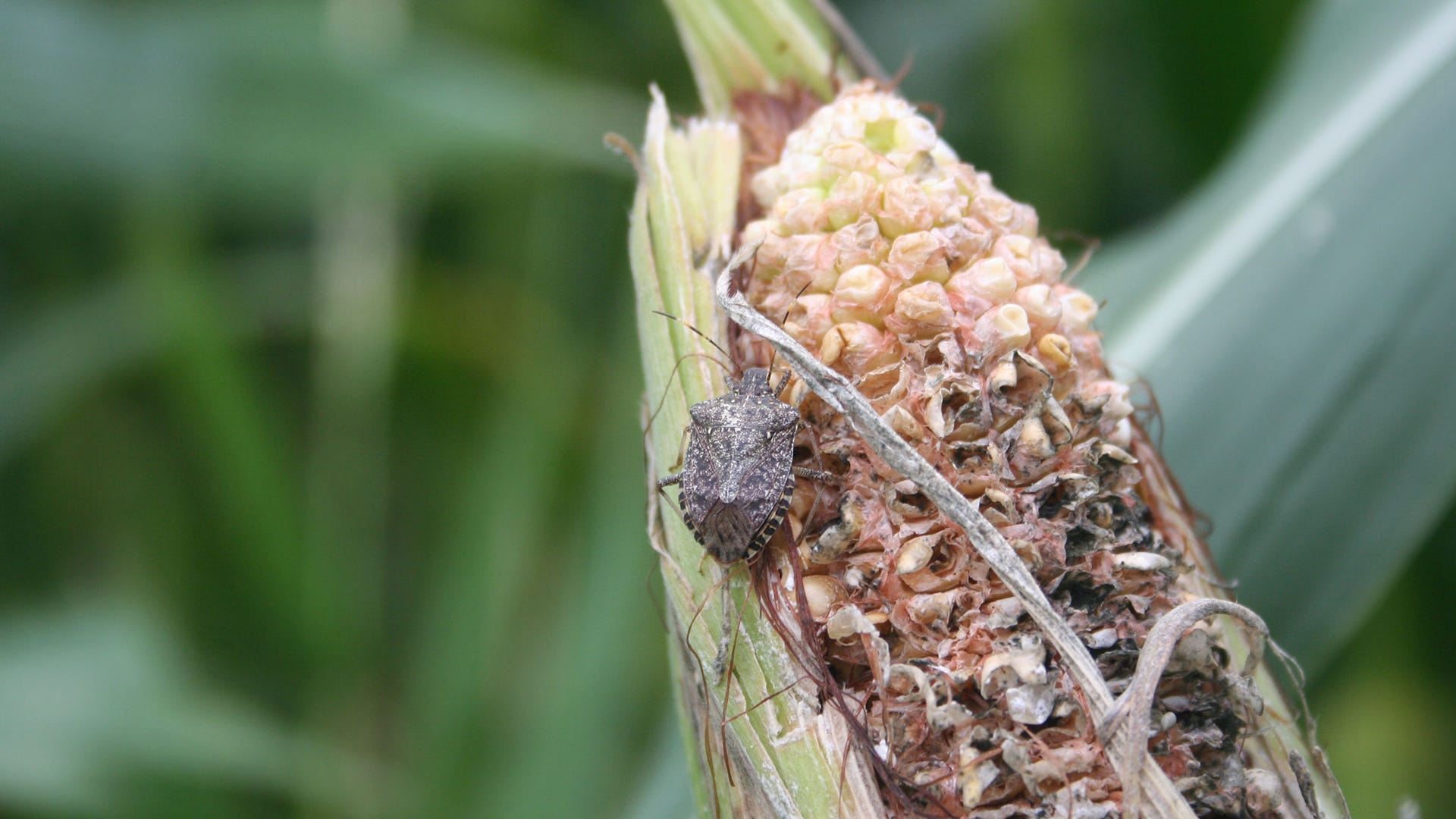In some areas of the country, boxelder bugs are a major nuisance for homeowners. These bugs swarm all over homes in the fall and make their way inside. And when we say “swarm,” we really mean it! They gather by the dozens all over the house, totally unconcerned by the presence of people, pets and any other potential predators. So what is it that makes these audacious bugs tick? Why do they try to get inside our homes? And most importantly, how do you get rid of boxelder bugs? Find out as we explore the most common questions people have about boxelder bugs!
1 – WHAT ARE BOXELDER BUGS?
Boxelder bugs (Boisea trivittatus) are insects native to the western U.S. They can become a major nuisance in the late summer and fall when they seek out sites for overwintering. During that time, they often gather in large numbers on the sunny side of trees and buildings. Adult boxelder bugs are about a ½-inch long and have orange or red markings on their black bodies. These insects are sometimes called box elder beetles and maple bugs. They are also commonly mistaken for stink bugs thanks to their flat backs and oval shape. By the way, don’t try to squish them! Doing so will cause them to emit a stinky smell. Smashing them can also leave a stain on many surfaces.
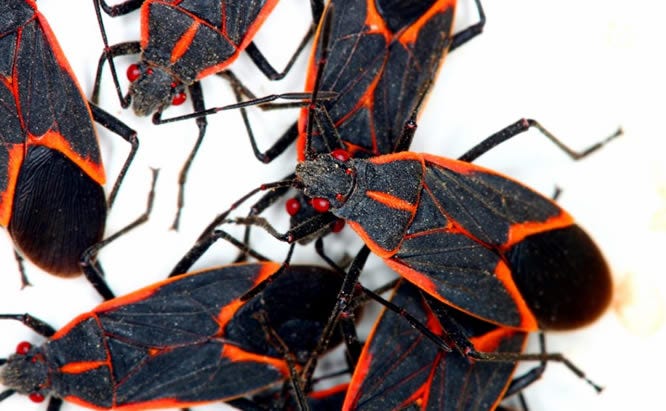
2 – DO BOXELDER BUGS FLY?
Boxelder bugs are considered strong and agile fliers, sometimes traveling several miles from the trees where they hatched as they seek out food sources and places to overwinter.
3 – CAN BOXELDER BUGS BITE?
Boxelder bugs won’t bite, but on rare occasions, they may prick you with a sharp mouthpart. As they are considered “true bugs,” they have evolved to suck nutrients from their food, rather than biting and tearing it with mandibles. Boxelder bugs do not have the ability to sting, either.
4 – ARE BOXEDLER BUGS POISONOUS TO PETS?
If your pet is prone to eating bugs, try to steer them clear of tasting a boxelder bug. As a defense against predators, these insects are said have an extremely foul taste. If your dog does eat a boxelder bug, expect that it may vomit in a short time and take preparations for that to happen by taking it outside or confine it to a room with tile floor. Some dogs, however, may have a different reaction – they may salivate excessively for a short time. Cats seem a little more likely to snack on and tolerate boxelder bugs. Still, they may suffer the same effects: Vomiting and/or excessive salivating. If you’re still concerned about the well-being of your cat or dog after it consumed a boxelder bug, contact your veterinarian for additional guidance.
5 – DO BOXELDER BUGS EAT PLANTS?
Boxelder bugs eat by sucking the juices out of plants. In particular, they feed upon the juice contained in the seeds of boxelder trees and other trees in the maple family. Even in large numbers, boxelder bugs seem to do little damage to these trees.
6 – DO BOXELDER BUGS STINK?
During their normal activity, boxelder bugs don’t emit any odor. However, when disturbed or smashed, they will release a pungent (and bad-tasting) compound to discourage predators. This, along with their orange or red markings, makes it easy for most predators to remember to avoid eating these bugs. Their defensive capabilities also explain another boxelder bug habit – since they have no concern about predators, they can gather in huge, conspicuous groups without the fear of being eaten.
7 – WHERE DO BOXELDER BUGS LAY EGGS?
Boxelder bugs lay their eggs on the trunks, branches and leaves of their food source. They do not lay eggs in or on houses or other structures. After hatching as nymphs 10 to 14 days later, they will molt five times throughout the spring, summer and fall months.
8 – WHAT ARE BOXELDER BUGS ATTRACTED TO?
Naturally, boxelder bugs are attracted to their food source – the seeds of the maple tree family. In the spring, they feed on the juice trapped in ungerminated seeds that have fallen off trees. As new seeds develop throughout the summer, they feed on those. Further, boxelder bugs are attracted to the areas where they can find shelter for the coming winter. In a natural setting, these areas include under rocks, inside hollow logs and behind loose bark. Manmade structures provide wonderful shelter for them too, where they can be found behind siding or in wood piles. To stay warm, they congregate on brick or stucco facades and on the surfaces of any south- or west-facing structures that catch significant amounts of sunlight.
9 – WHY ARE BOXELDER BUGS ACTIVE IN THE FALL?
People notice boxelder bugs in the fall more than any other time of the year because they become such a nuisance at this time. During the spring and summer, one or two generations of boxelder bugs develop. As the weather turns colder, these insects go into survival mode – they need a place to stay for the winter, and they often try to invade human structures. The resulting swarm on home and building exteriors makes their presence especially obvious. During this time, you’ll find them trying to get inside through cracks and crevices, damaged window screens, ventilation ducts, utility conduits and plumbing.
10 – HOW DO YOU CONTROL BOXELDER BUGS? HOW DO YOU GET RID OF BOXELDER BUGS?
In some years, the sheer number of boxelder bugs can make the task of controlling them seem daunting. Still, several simple steps can be taken to limit their ability to get inside.
- Remove Boxelder Bug Food Sources – If possible, remove the trees that they are feeding on, which will deter the insects from remaining in your yard. Since boxelder bugs are only attracted to “female” maples that develop seed pods, you can just eliminate those trees.
- Seal Gaps in Your Home – Boxelder bugs can fit in spaces as small as 1/8- inches, so seal such spaces with caulk or foam. Also install door sweeps on exterior entry doors.
- Check or Install Screens – Check the screens on your windows and doors for holes. Add a screen on ventilation ports, including vents for dryers, heating, air conditioning and soffits.
TERRO® offers a number of boxelder bug killers that can help you eliminate your boxelder bug problem indoors and out.
- Create a perimeter – Use this boxelder bug treatment to create a protective, bug-killing perimeter around your home.
- Indoor protection – This boxelder bug spray can be applied inside your home to establish a long-lasting residual barrier that’s also effective against dozens of other insects.
- Treat cracks and crevices – Use this two-way aerosol spray of boxelder bug killer to hit them where they’re hiding.
- Hit boxelder bugs at a distance – Are there boxelder bugs congregating just out of your reach? Blast them with an insect killing spray that reaches up to 10 to 15 feet away.
ARE THE BOXELDER BUGS BAD THIS YEAR?
If you’re fighting an infestation of boxelder bugs, we would love to see pictures! Visit TERRO® on Facebook to post your pictures. Got any more questions about boxelder bugs? Post them on Facebook, and we’ll answer them. For more articles like this, as well as helpful links to TERRO® products, subscribe to our eNewsletter.

